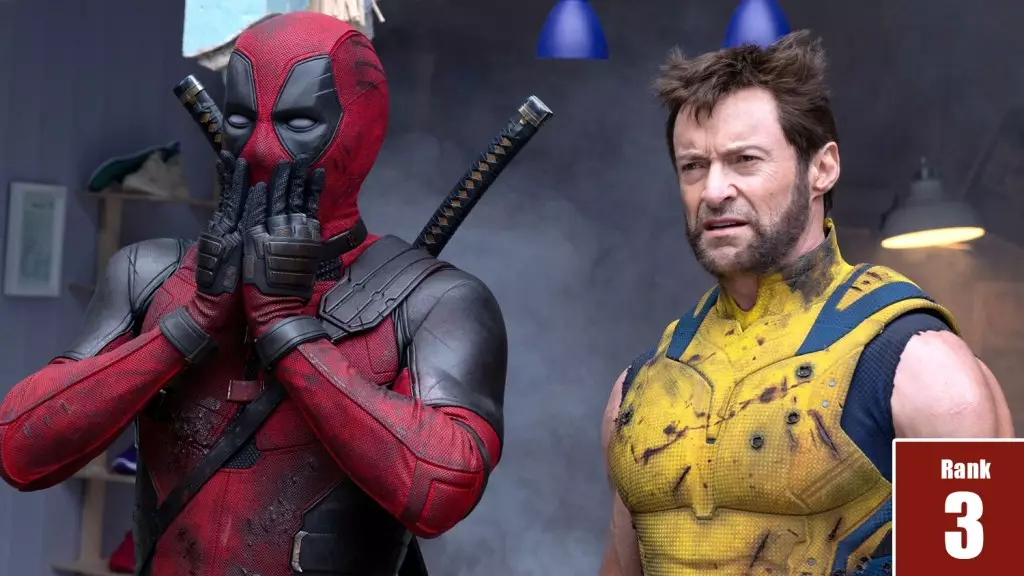The film industry is witnessing a remarkable transformation in 2024, with blockbuster films reasserting their dominance not just in terms of box office earnings, but in the extensive revenue streams that follow. The traditional Hollywood model is being recalibrated as studios grapple with the implications of streaming and new distribution methods. Revenue is no longer just about ticket sales; it now encompasses a complex web of secondary markets, from digital rentals to merchandise sales. This shift represents a seismic change in how films are evaluated, opening up fresh opportunities for innovation within the cinematic landscape.
The conception of the Deadline’s Most Valuable Blockbuster tournament serves as an insightful reflection of these changes. By excluding platforms like Apple and Amazon — which approach profitability in distinctive, unconventional manners — the competition highlights a clear distinction in Hollywood’s approach to profit. Only films that fit the ‘traditional’ paradigm of box office success are considered, thus revealing the precarious nature of the current cinematic market.
The Deadpool Phenomenon: Breathing New Life into Superhero Cinema
Disney’s strategic management of the Deadpool franchise exemplifies the industry’s new dynamics. The upcoming “Deadpool & Wolverine” film, which had faced delays due to industry strikes, has reignited interest in superhero films. This sequel capitalizes on something more profound than simple nostalgia; it not only demonstrates how absence can fuel anticipation but also how comic book properties are being revitalized in the face of audience fatigue.
The film’s arrival comes after a stretch of diminishing superhero returns, making its explosive opening weekend — the largest ever for an R-rated movie — truly remarkable. By netting over $1 billion globally, the film underscores both the resilience of the genre and Disney’s clever marketing tactics. From the zany humor reminiscent of cult classics to the strong chemistry between Ryan Reynolds and Hugh Jackman, “Deadpool & Wolverine” has revitalized the tired superhero narrative, emerging as a front-runner in a saturated marketplace.
The role of strategic marketing cannot be underestimated; significant moves like unveiling clips at major events like San Diego Comic-Con and a highly anticipated Super Bowl trailer created palpable excitement. This meticulously designed campaign not only built a buzz leading up to the release but also engaged fans on multiple levels, proving that a movie’s success lies in understanding and leveraging the cultural zeitgeist.
The Financial Landscape: Profit Beyond the Box Office
Profitability in film has always been a complex calculation, but 2024 has taken this to new heights. Films are increasingly measured not just by their opening weekend numbers but their total lifetime earnings across various platforms. Disney’s “Deadpool & Wolverine” serves as a case study in this new reality. Its $200 million production cost reflects the investment needed to breathe fresh life into the franchise after industry disruptions, reminding us that high stakes are inherent in big-budget filmmaking.
Interestingly, as traditional studios navigate these waters, they set their sights on diversifying revenue. From merchandising to international rights, every facet of a film’s release is now critiqued more meticulously than ever. The collaborations and cross-promotional opportunities that come from the intersection of major media and cultural events — such as Comic-Con — elevate earnings by driving fan engagement beyond the theater.
For “Deadpool & Wolverine,” the stakes have never been higher. The triumphant return of a fan-favorite character, combined with the nostalgia of past X-Men films, allows Disney not just to reclaim its audience but also to set higher benchmarks for profitability. Such instances indicate a clear trend: building a film’s charisma heavily relies on marketing strategies that resonate with existing fandoms.
The Future of Blockbusters: Embracing New Frontiers
Looking ahead, the evolution is likely to continue. Studios and producers need a keen understanding of how to market and monetize films in an era dominated by streaming services and changing consumer behavior. As the accessibility of films continues to expand structurally, the expectation for blockbuster content to deliver beyond box office returns will only intensify.
The successful launch of “Deadpool & Wolverine” is not just another win for the superhero genre; it is a testament to the adaptability and revitalization of cinema amidst adversity. Directors, producers, and studios now have clearer blueprints to follow — combining old prejudices with innovative narratives to cater to diverse audiences. As audiences remain eager for entertainment that capitalizes on nostalgia while also pushing narrative boundaries, the blockbusters of 2024 may well signal the dawn of a new era in film history.
This evolving narrative demands that filmmakers embrace creativity alongside calculated risk. The future of blockbusters lies in their ability to understand their audience deeply and offer something fresh. The game is no longer simply about who can make the most money at the box office but about reshaping the entire architecture of cinematic engagement.

